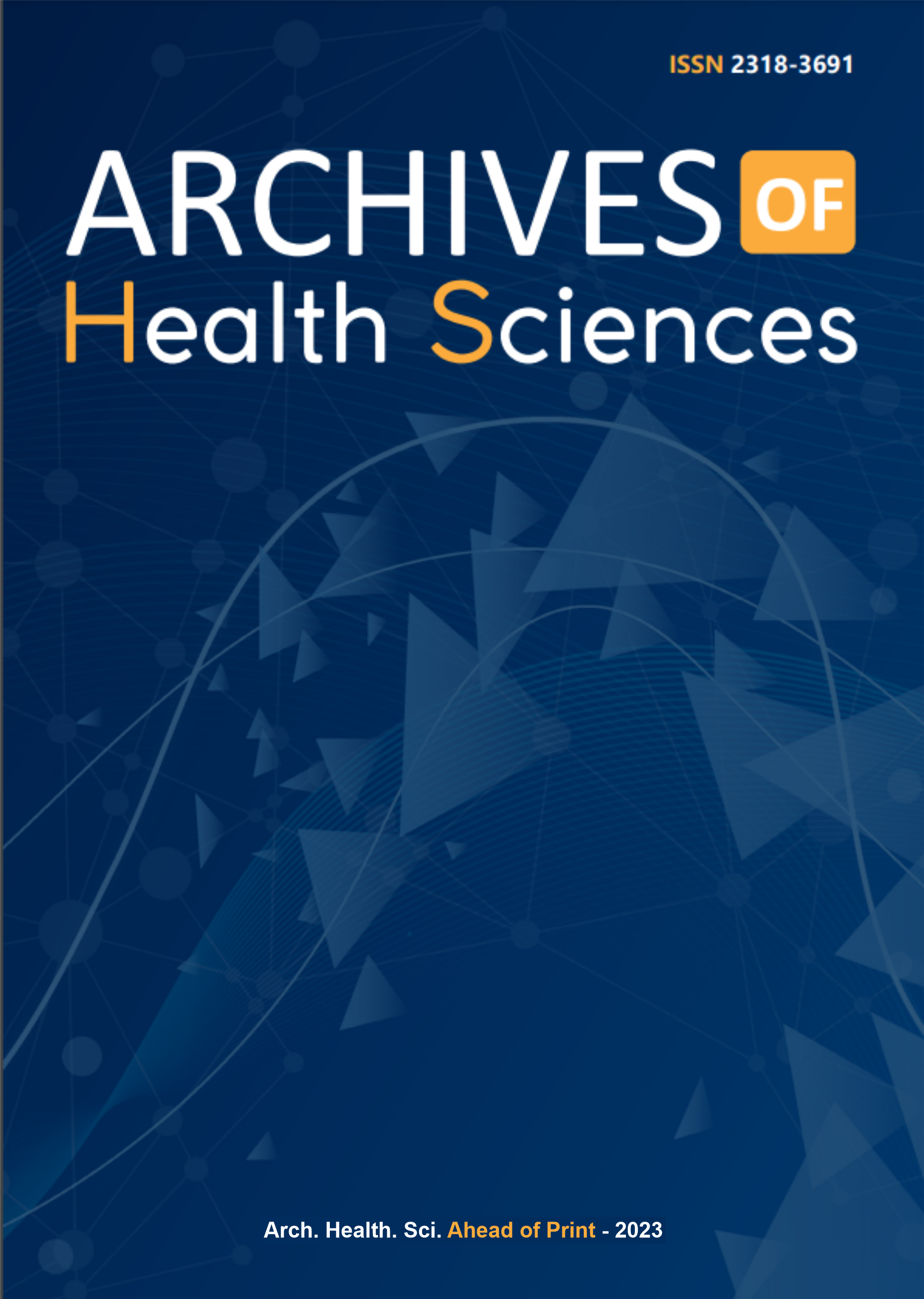Prevalence of pathologies associated with impacted wisdom teeth in a subpopulation in northern Brazil: a radiographic study
DOI:
https://doi.org/10.17696/2318-3691.30.1.2023.171Keywords:
Tooth, Impacted; Molar, Third; Cross-Sectional Studies; Radiography, PanoramicAbstract
Introduction: Dental impaction is an anomaly in which the tooth does not erupt in the dental arch based on clinical and radiographic features. A wisdom tooth can have a variety of positions and levels of retention, which can result in a range of associated pathologies, the most common of which are: caries; root resorption of the adjacent tooth; alveolar bone loss and increased space in the pericoronary space. Objective: To evaluate the prevalence of pathologies in radiographically impacted wisdom tooth in a subpopulation in the North of Brazil. Method: 1192 digital panoramic radiographs of patients seen in a Dentistry Course in Northern Brazil were evaluated. The age range was 18 to 76 years and the radiographic findings observed were: caries, radicular resorption, alveolar bone loss and an increase in the pericoronary space greater than 4 mm. Results: The prevalence of associated pathologies was 67.5%. The alveolar bone loss of the adjacent tooth of more than 5 mm had the highest frequency of pathology, 507 (50.3%), root resorption of the adjacent tooth, 222 (22.0%), caries, 157 (15.6%) and increase in the periconary space, 121 (12.0%). Conclusion: Early detection of pathologies associated with wisdom tooth is essential for effective treatment. The study showed that the prevalence of pathologies in impacted wisdom tooth was 67.5%. The most common pathology was alveolar bone loss, followed by root resorption of the adjacent tooth, an image suggestive of caries and an increase in the pericoronal space.
References
Kumar VR, Yadav P, Kahsu E, Girkar F, Chakraborty R. Prevalence and pattern of mandibular third molar impaction in eritrean population: a retrospective study. J Contemp Dent Pract [periódico na Internet]. 2017 [acesso em 2020 Feb 09];18(2):100-6. doi: 10.5005/jp-journals-10024-1998
Patel PS, Shah JS, Dudhia BB, Butala PB, Jani YV, Macwan RS. Comparison of panoramic radiograph and cone beam computed tomography findings for impacted mandibular third molar root and inferior alveolar nerve canal relation. Indian J Dent Res [periódico na Internet]. 2020 [acesso em 2022 May 07];31(1):91-102. doi: 10.4103/ijdr.IJDR_540_18
Silva Sampieri MB, Viana FLP, Cardoso CL, Vasconcelos MF, Vasconcelos MHF, Gonçales ES. Radiographic study of mandibular third molars: evaluation of the position and root anatomy in Brazilian population. Oral Maxillofac Surg [periódico na Internet]. 2018 [acesso em 2020 Feb 09];22(2):163-8. doi: 10.1007/s10006-018-0685-y
Sejfija Z, Koҁani F, Macan D. Prevalence of pathologies associated with impacted third molars in kosovar population: an orthopanthomography study. Acta Stomatol Croat [periódico na Internet]. 2019 [acesso em 2020 Jan 10];53(1):72-81. doi: 10.15644/asc53/1/8
Ventä I, Vehkalahti MM, Huumonen S, Suominen AL. Signs of disease occur in the majority of third molars in an adult population. Int J Oral Maxillofac Surg [periódico na Internet]. 2017 [acesso em 2022 May 07];46(12):1635-40. doi: 10.1016/j.ijom.2017.06.023
Kindler S, Ittermann T, Bülow R, Holtfreter B, Klausenitz C, Metelmann P, et al. Does craniofacial morphology affect third molars impaction? Results from a population-based study in northeastern Germany. PLoS One [periódico na Internet]. 2019 [acesso em 2022 Jun 11];14(11):e0225444. doi: 10.1371/journal.pone.0225444
Sarica I, Derindag G, Kurtuldu E, Naralan ME, Caglayan F. A retrospective study: do all impacted teeth cause pathology? Niger J Clin Pract [periódico na Internet]. 2019 [acesso em 2022 Jul 11];22(4):527-33. doi: 10.4103/njcp.njcp_563_18
Yanik S, Ayranci F, İşman Ö, Büyükçikrikci Ş, Aras MH. Study of kissing molars in Turkish population sample. Niger J Clin Pract [periódico na Internet]. 2017 [acesso em 2022 Jul 11];20(6):659-64. doi: 10.4103/1119-3077.183243
Hermann L, Wenzel A, Schropp L, Matzen LH. Marginal bone loss and resorption of second molars related to maxillary third molars in panoramic images compared with CBCT. Dentomaxillofac Radiol [periódico na Internet]. 2019 [acesso em 2022 Jun 20];48(4):20180313. doi: 10.1259/dmfr.20180313
Synan W, Stein K. Management of impacted third molars. Oral Maxillofac Surg Clin North Am [periódico na Internet]. 2020 [acesso em 2022 Jun 15];32(4):519-59. doi: 10.1016/j.coms.2020.07.002
Chou YH, Ho PS, Ho KY, Wang WC, Hu KF. Association between the eruption of the third molar and caries and periodontitis distal to the second molars in elderly patients. Kaohsiung J Med Sci [periódico na Internet]. 2017 [acesso em 2022 Jul 21];33(5):246-51. doi: 10.1016/j.kjms.2017.03.001
Ventä I, Vehkalahti MM, Suominen AL. What kind of third molars are disease-free in a population aged 30 to 93 years? Clin Oral Investig [periódico na Internet]. 2019 [acesso em 2022 Jul 22];23(3):1015-22. doi: 10.1007/s00784-018-2528-5
Nagori SA, Jose A, Bhutia O, Roychoudhury A. Large pediatric maxillary dentigerous cysts presenting with sinonasal and orbital symptoms: a case series. Ear Nose Throat J. 2017;96(4-5):E29-E34.
Downloads
Published
Issue
Section
License
Copyright (c) 2023 Archives Health Sciences

This work is licensed under a Creative Commons Attribution-NonCommercial-ShareAlike 4.0 International License.










